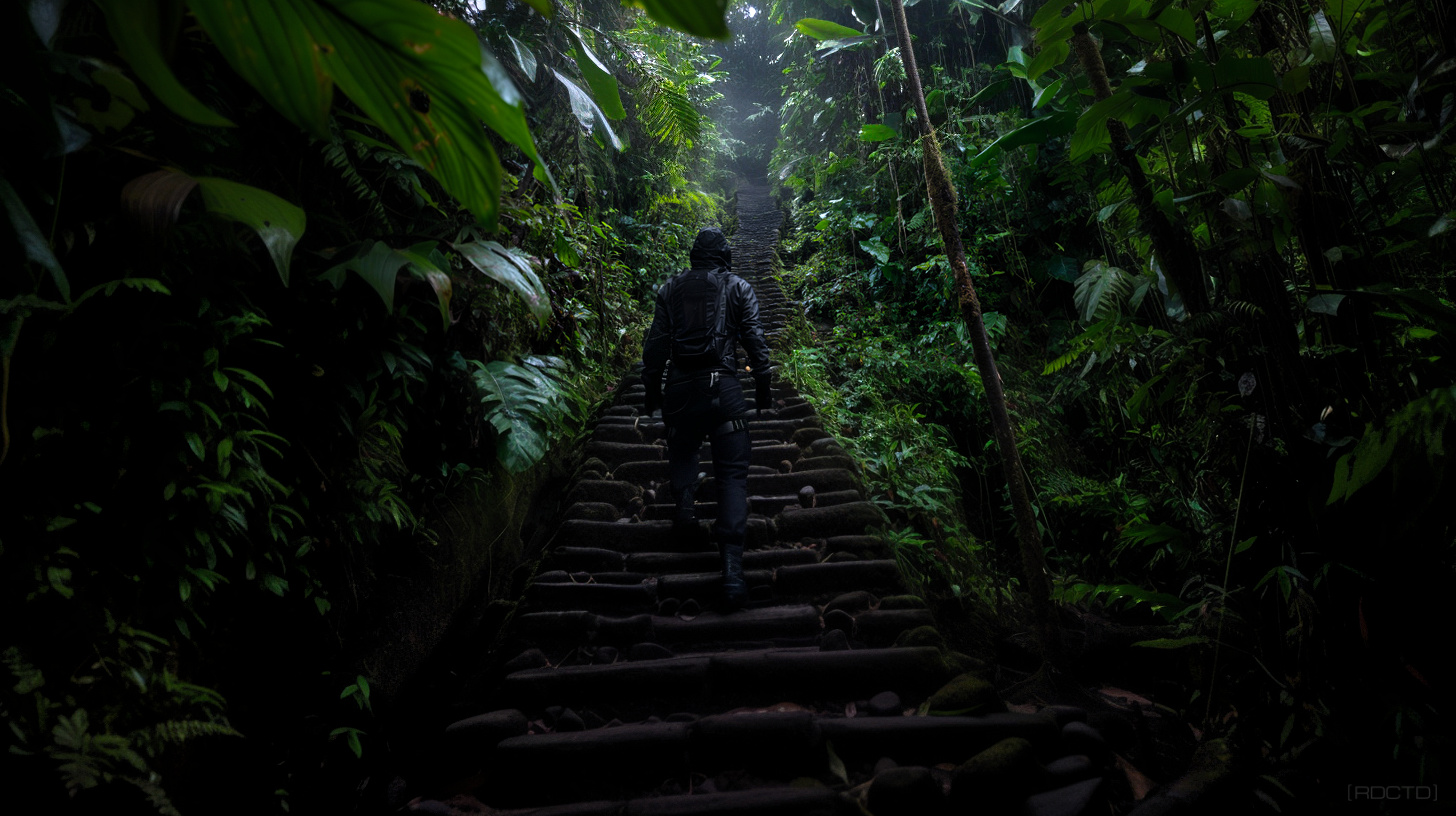 Breaking your “internal limiter” is deliberately pushing beyond the mental and physical boundaries your mind unconsciously sets – to grow, adapt, evolve, and unlock higher levels of personal performance.
Breaking your “internal limiter” is deliberately pushing beyond the mental and physical boundaries your mind unconsciously sets – to grow, adapt, evolve, and unlock higher levels of personal performance.Elite operators don’t ask ‘Is this something I can do?’, instead they ask ‘What do I have to become to get it done?’
An “internal limiter” is the psychological, emotional, and physiological ceiling (limit) we unconsciously impose on ourselves. It manifests in self-doubt, hesitation, fear of failure, and physical fatigue. Operatives, athletes, and high-performers of every kind face this barrier – without realizing it.
The internal limiter isn’t a single wall, but a shifting threshold your mind and body set to preserve what they interpret as equilibrium or safety. It’s a defense mechanism, designed to keep you safe, not to make you exceptional.
In covert operations, this limiter can be detrimental. Mastering your internal state becomes part of your personal tradecraft, just as critical as combatives or deception. To evolve beyond the limiter, you have to override your perception of capacity and the survival instincts built into your nervous system. Using deliberate exposure to discomfort, discipline, and psychological conditioning.
Every time you pull back from pressure, you reinforce the lie that you’ve reached your limit. You don’t need more time, more training, or more talent. You need fewer excuses.
[LIMIT RECOGNITION]
Before you can break your internal limiter, you need to accept one hard truth: most of the limits you feel aren’t physical, they’re self-imposed. The first step in breaking this limiter is to recognize then admit it exists.
You need to observe when you’re pulling back (not due to real) world constraints, but from mental resistance. That voice that says “I’m done,” when you’re 60% into a ruck march or when you’re on hour twelve of a surveillance sit. Discomfort is not danger, your brain mistakes stress for threat.
Train yourself to question those withdrawal impulses. Over time, you’ll start to separate real exhaustion or risk from the false alarms your mind throws up. That awareness alone shifts your baseline. Then you can start breaking.
• Track Patterns of Avoidance Mentally: Instead of writing things down, develop the habit of real-time reflection. When you hesitate or want to stop, pause briefly and note the conditions; what you’re doing, how it feels, and what story your brain is telling you. That quick mental recon builds self-awareness in the moment, exactly where it matters.
• Conduct Intentional Stress Drills: Just like you’d run counter-surveillance exercises or dry fire drills, build routines that replicate discomfort. Set a timer and hold a plank until the burn hits; speak impromptu in front of peers until your heart rate spikes. The point isn’t to win, it’s to expose the line where you want to stop, then push two inches past it.
• Redefine the Stop Signal: Most people interpret the first surge of discomfort as the finish line, but for operatives, it should be the starting bell. Reframe pain, boredom, and frustration as environmental cues that you’re in the right zone. When your limiter fires up, recognize it as a signpost (not a shutdown) and push into it with intention.
![]()
Once you learn to identify your internal limiter, it loses power. Awareness alone gives you room to act instead of react. Think of it like building situational awareness, but for your own mind – an internal surveillance loop.
Every time you catch that “quit” signal and choose action instead, you push the boundary of what’s possible. It was always possible, but now you know.
That also reinforces the mindset required for high-performance under real-world stress. This isn’t motivational fluff, it’s tactical mental conditioning. And in tradecraft, mental edge is just as critical as physical readiness.
Fear and doubt isn’t the enemy, it’s just the noise your internal limiter makes when you’re near your next evolution.
[THE BREAKING]
To push past the internal limiter, you have to apply pressure – systematically, deliberately, and with control. Controlled exposure is essential. Progressive overload isn’t just for weightlifting; it’s how you train your nervous system to adapt to stress, discomfort, and uncertainty.
Pick one area; physical endurance, public speaking, memory drills, cold exposure – and steadily increase the intensity beyond your current edge. Don’t just practice what you’re good at. Practice what makes you uncomfortable.
• Push the Edge, Then Hold: When you feel that panic spike or mental quit signal, don’t step back – hold the line for thirty more seconds. That window, right when your instincts say stop, is where growth lives. Every time you stay in that space a little longer, you recalibrate your internal settings and teach your brain it’s not in danger – it’s evolving.
• Micro-Decisions Build Macro Strength: You don’t break your limiter in one dramatic act. It’s built or dismantled through daily choices. Taking the cold shower when you don’t want to. Finishing the extra set when your body says no. Making the hard call instead of waiting for the timing to feel right. Each of these is a rep for your resilience.
• Shift Your Training Philosophy: Stop treating discomfort as a problem. Start treating it like the training ground. The moment it gets hard is not the signal to back off, it’s the invitation to train. Real stress inoculation happens in those high-friction zones, where your comfort zone ends and your operational edge begins.
![]()
This is training and practice, not a moment. Breaking your internal limiter may begin with one burst of willpower, but it takes consistent engagement with discomfort, using it as the resistance that sharpens your edge.
In covert operations, conditions rarely align perfectly. The operative who’s trained to thrive in adversity – who can sit in the discomfort and still move forward – will always outperform the one who needs comfort to operate.
High-performers don’t eliminate fear or fatigue, they override it with intention, discipline, and relentless forward pressure.
[CONTROL]
Breathing and internal dialogue become weapons here. These are personal tools you can deploy under pressure to regain control of your physiology and mindset.
In the chaos of combat, professionals from SOF operators to CIA operatives rely on breath control to suppress panic, regulate heart rate, and maintain clarity when the situation turns volatile.
The same principle applies in personal performance. When your internal limiter kicks in – when your hands shake, your chest tightens, or your thoughts spiral – you need immediate, trainable tools to override that response.
![]()
These are soft skills as tactical inputs into your stress response system. When your internal limiter is flaring, the body is usually the first to betray you. By locking down breath and language, you prevent the system from spiraling.
This is a critical piece of psychological tradecraft: composure isn’t natural, it’s built and conditioned. And it starts with controlling what you say and how you breathe when everything in you wants to fold and quit.
No one evolves by accident. Evolution begins the moment you stop obeying the limit that you think is holding you back.
[METAPHYSICAL]
Understand that the internal limiter isn’t just physical, it’s emotional, intellectual, and to some, even spiritual. And it tends to be more deeply embedded in your identity than any muscle fatigue or stress reaction.
Most people on some level carry fixed beliefs about themselves that act like hardwired ceilings: “I’m not a leader,” “I can’t learn languages,” “I’m not good under pressure.” These personality quirks are operational liabilities on and off the field. In high-stakes environments and intense scenarios, they don’t just hold you back; they compromise your effectiveness.
• Challenge Identity Assumptions: If you believe you’re not a leader or not calm under stress, ask yourself why and then deliberately put yourself in situations that contradict that belief. Take the lead on a project, speak up when you normally wouldn’t, or train under unpredictable conditions. Force your identity to adjust to your actions, not the other way around.
• Reframe Ego as a Tool, Not a Master: Your ego resists change because change threatens the known self. Use discomfort to train your ego, not protect it. Step into roles or scenarios that you find awkward or unnatural. Not to fake confidence, but to stretch your perception of what you’re capable of. Operatives aren’t forged in comfort, they’re shaped by consistent exposure to friction.
• Test Yourself Under Pressure, Then Adapt: Instead of guessing what you’re good at, test it. Put yourself in decision-making roles, negotiation exercises, or mentally demanding situations, and observe how you actually perform. Then refine. Treat your self-image like mission gear: assess, upgrade, discard what’s faulty. What worked for who you were five years ago might be obsolete now.
![]()
This is how you evolve into a more capable human and operative – by breaking the self-image that’s keeping you static. False narratives, even if subtle, act like constraints on your behavior, risk tolerance, and growth.
In tradecraft, adaptability is success and survival. And if your internal blueprint hasn’t been updated, you’re behind the curve, operating with outdated maps in new terrain. Tear it down. Rebuild it with evidence, not ego.
If you think you’re weak. You’re most likely just too comfortable with not testing that theory.
Breaking your internal limiter starts as a one-time breakthrough but it should be a lifetime posture to be at your most optimal. It’s choosing to be anti-fragile regularly. It’s putting yourself in unfamiliar terrain on purpose. In the field, the unknown is standard operating procedure – embrace it.
The operative who’s trained their body and mind to step through uncertainty, fatigue, and fear without hesitation is the one who survives, thrives, and adapts. Evolution doesn’t come from talent or luck. It comes from pressure. And pressure is what you use to break the limiter.
![]()
// You don’t train to feel ready. You train to act when you don’t.
[INFO : Training is ‘Code’ That ‘Rewrites’ You]
[OPTICS : Amazon Jungle, Peru]
![[RDCTD]](https://rdctd.pro/wp-content/uploads/RDCTD-Covert-Operative-Tradecraft-Guide-LOGO-tk.png)
![[RDCTD]](https://rdctd.pro/wp-content/uploads/RDCTD-Covert-Operative-Tradecraft-Guide-LOGO-mobile.png)






